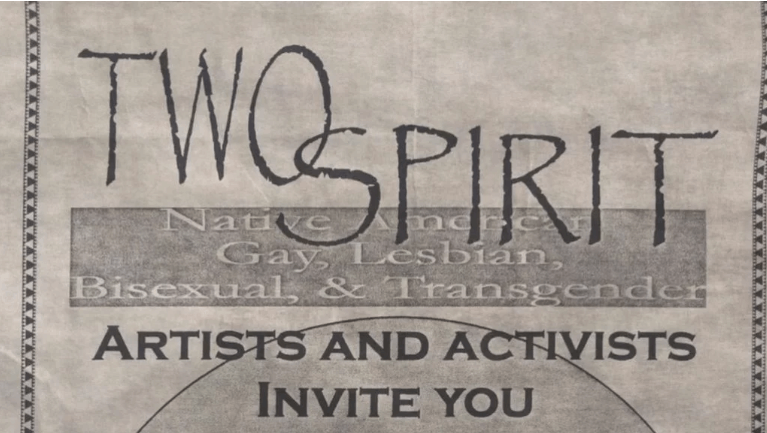A Third Gender Identity Has Existed for Centuries

California and Oregon recently made U.S. history by being the first states to legally recognize a third gender. As a result, many people in the U.S. are learning about non-binary gender identities for the first time.
But for Two-Spirited folk, indigenous North Americans who identify as both masculine and feminine, and many tribes, this is not a new concept.
Centazi Nicholas Metcalf is a Two-Spirited Lakota artist and activist living in the Twin Cities. Metcalf’s story is featured in “Out North: MNLGBTQ History,” a new documentary produced by Twin Cities PBS and available to stream for free online.
In the documentary, Metcalf talks about the ancient history of LGBTQ people, specifically Two Spirits.
“Gay and lesbian folks in indigenous tribes have been celebrated for many many centuries, long before America was created,” Metcalf said in a TED talk about Two Spirit identity.
In many traditional indigenous communities and stories, Two Spirit people have a place, Metcalf said.
“Of the 566 tribal communities in this country, most everybody has a Two-Spirited person,” Metcalf said. “In my language I’m known as a ‘winkte,’ I’m a third-gendered person.”
Historically, Two-Spirited people took on responsibilities of both men and women. They also held special places in their tribes.
“We’re storytellers, we teach sacred ceremonies, we’re the person that can go between men and women, so we’re the bridge-builders, and a lot of our creation stories talk about Two-Spirited people coming to save the world,” Metcalf said.
‘Everything is sacred’
The male-female gender binary has a strong hold on Western culture. Metcalf said that to get to a place of understanding Two Spirit or non-binary identity, it helps to try shifting your frame of reference.
“In order to understand this concept of Two-Spiritedness, I need you to step away from American culture and how you view and identify gender and sexuality and all those sorts of things,” Metcalf said. “Folks need to step into an indigenous worldview to understand that everything is sacred and everything has use and the creator makes no mistake.”
Though understanding of sexuality and gender is shifting and broadening, Metcalf said in their talk that they choose to dress in masculine clothes because it’s still not safe for them to dress in women’s clothing.
When they have dressed in feminine clothing, they said, they found that others would encroach on their personal space. Metcalf was once sexually assaulted while dressed in women’s clothes.
It’s time for people of all genders to feel safe expressing themselves how they want to, Metcalf said.
“It’s time to create space for gender fluidity.”
Metcalf has two sons. When they were small and their friends used to ask questions about Metcalf’s identity, Metcalf would explain it simply: “The world’s a great big place and there are lots of different kinds of people, and I’m one of them.”

This article originally appeared on Rewire
© Twin Cities Public Television - 2017. All rights reserved.
